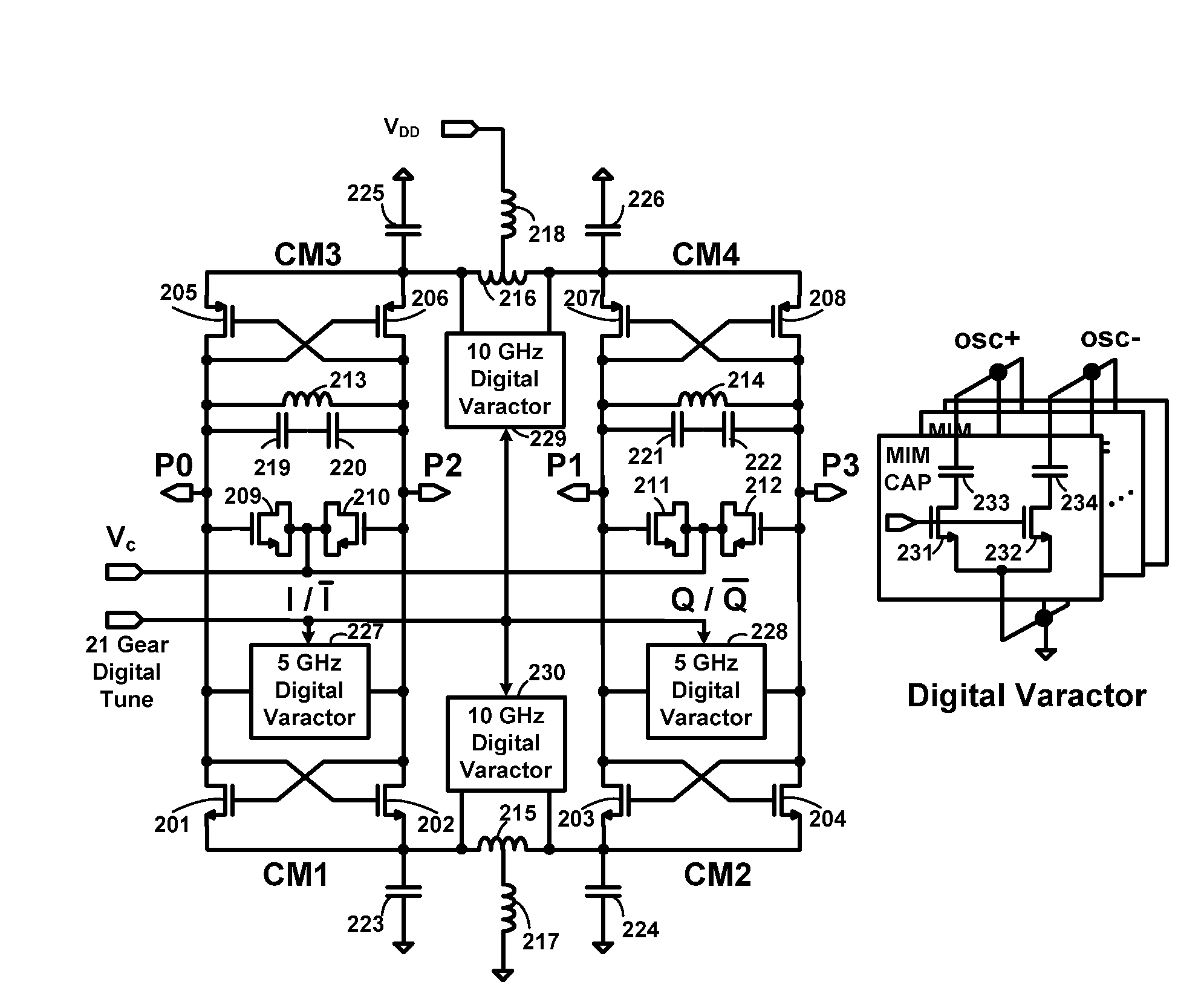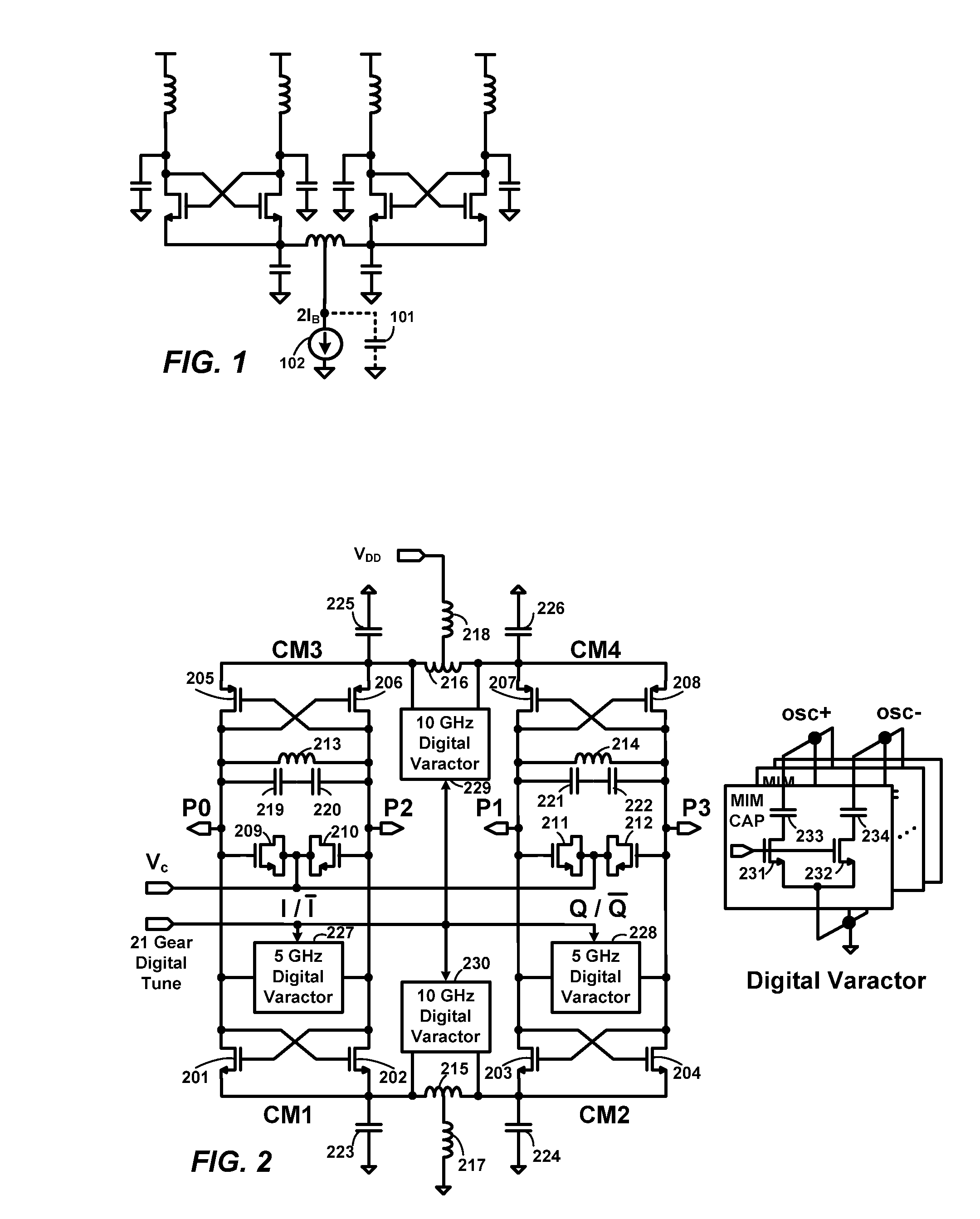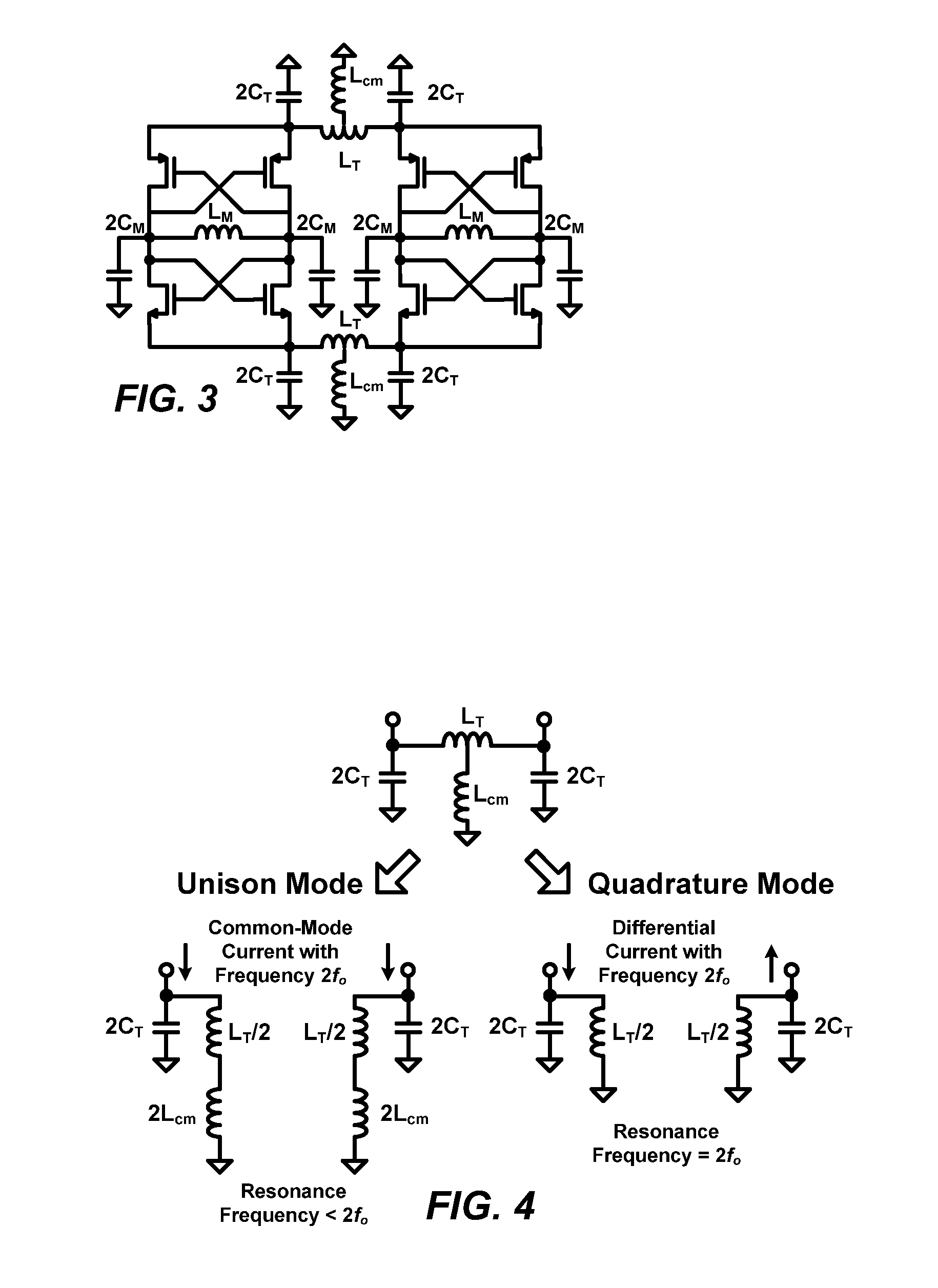Low Phase-Noise Oscillator
a low-phase noise, oscillator technology, applied in the field of oscillators, can solve the problems of unpredictable oscillation frequency and i/q 90° phase ambiguity, the use of polyphase filters, and the cost of increasing power dissipation and sensitivity to component mismatches, so as to reduce the impact of injected noise, and reduce the effect of i/q mismatch
- Summary
- Abstract
- Description
- Claims
- Application Information
AI Technical Summary
Benefits of technology
Problems solved by technology
Method used
Image
Examples
Embodiment Construction
Quadrature-Phase LC-VCO Circuit
[0041]The proposed QVCO utilizing tail-tank coupling is shown in FIG. 2, and its equivalent model for analysis is shown in FIG. 3. Two copies of complementary LC-VCOs are combined together at NMOS and PMOS tail nodes by two separate LC tanks. Whenever a transistor in a cross-coupled pair enters the triode region, the tail node waveform is forced to follow the main tank waveform. Two transistors in a cross-coupled pair take turns operating in the deep-triode region, and thus, oscillation waveforms at frequency 2fo are created at the tail nodes. There are two possible modes of oscillation: The two complementary LC-VCOs can either oscillate in unison to produce the same output phases or they can produce quadrature output phases as described in A. Mirzaei and A. A. Abidi, “Analysis of oscillators locked by large injection signals: generalized Adler's equation and geometrical interpretation,” in Proc. IEEE Custom Integrated Circuits Conf., September 2006, p...
PUM
 Login to View More
Login to View More Abstract
Description
Claims
Application Information
 Login to View More
Login to View More - R&D
- Intellectual Property
- Life Sciences
- Materials
- Tech Scout
- Unparalleled Data Quality
- Higher Quality Content
- 60% Fewer Hallucinations
Browse by: Latest US Patents, China's latest patents, Technical Efficacy Thesaurus, Application Domain, Technology Topic, Popular Technical Reports.
© 2025 PatSnap. All rights reserved.Legal|Privacy policy|Modern Slavery Act Transparency Statement|Sitemap|About US| Contact US: help@patsnap.com



